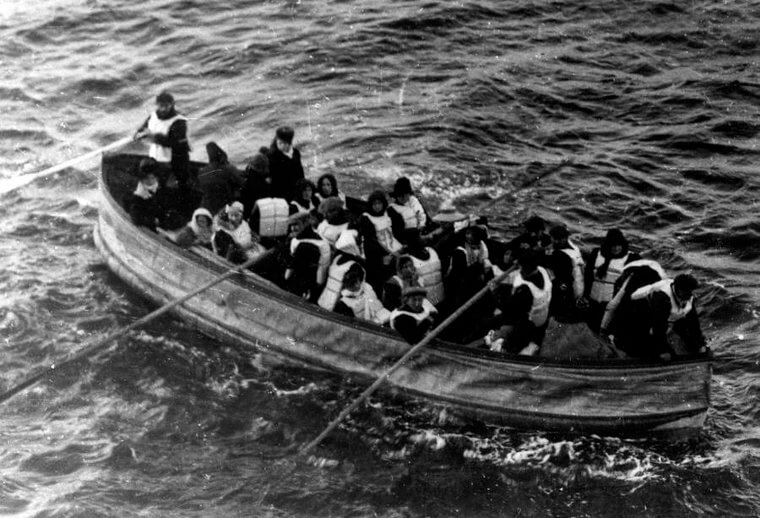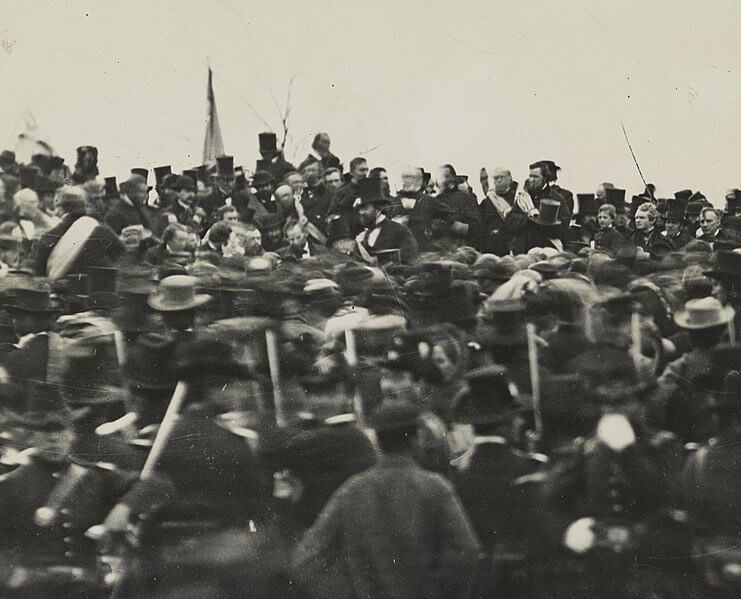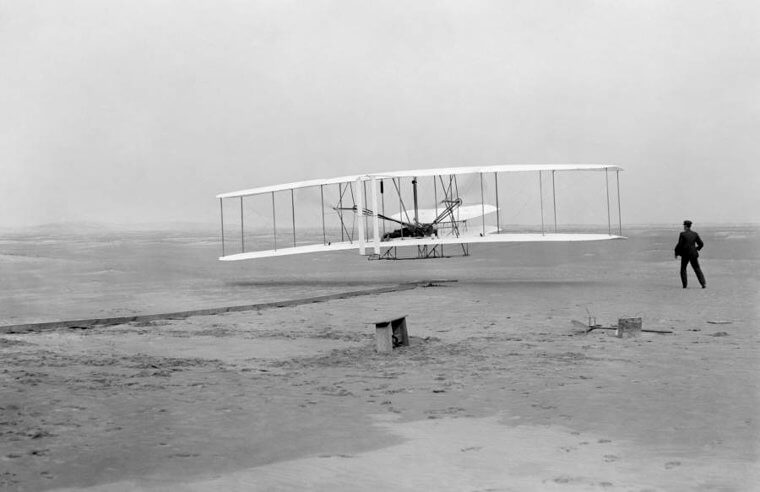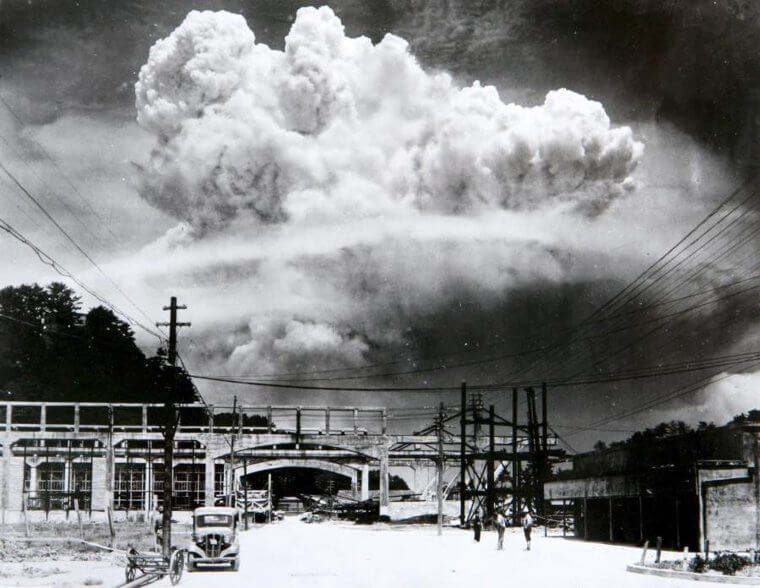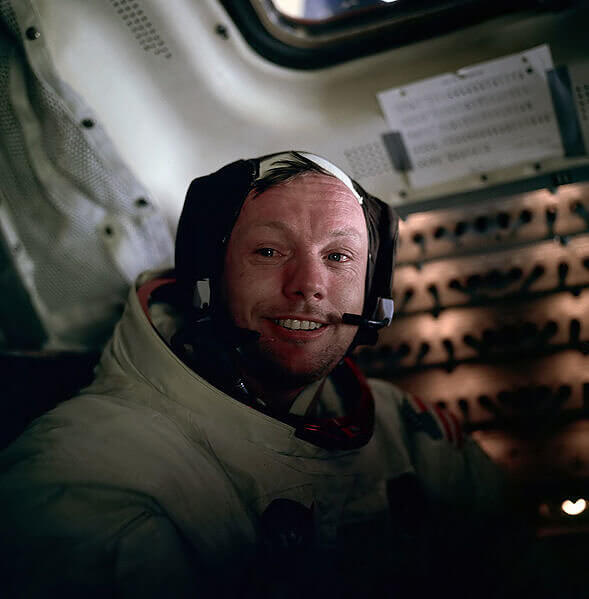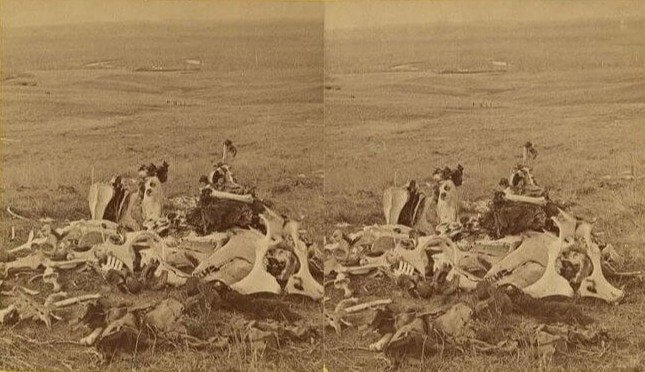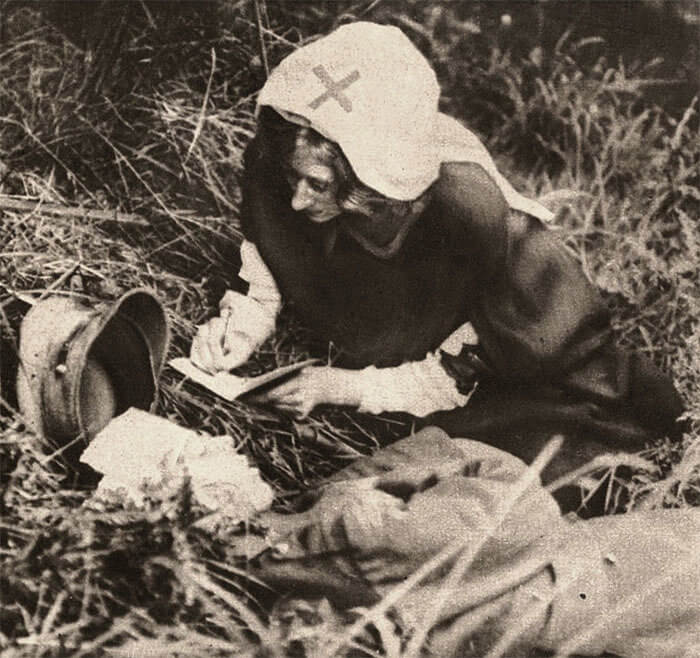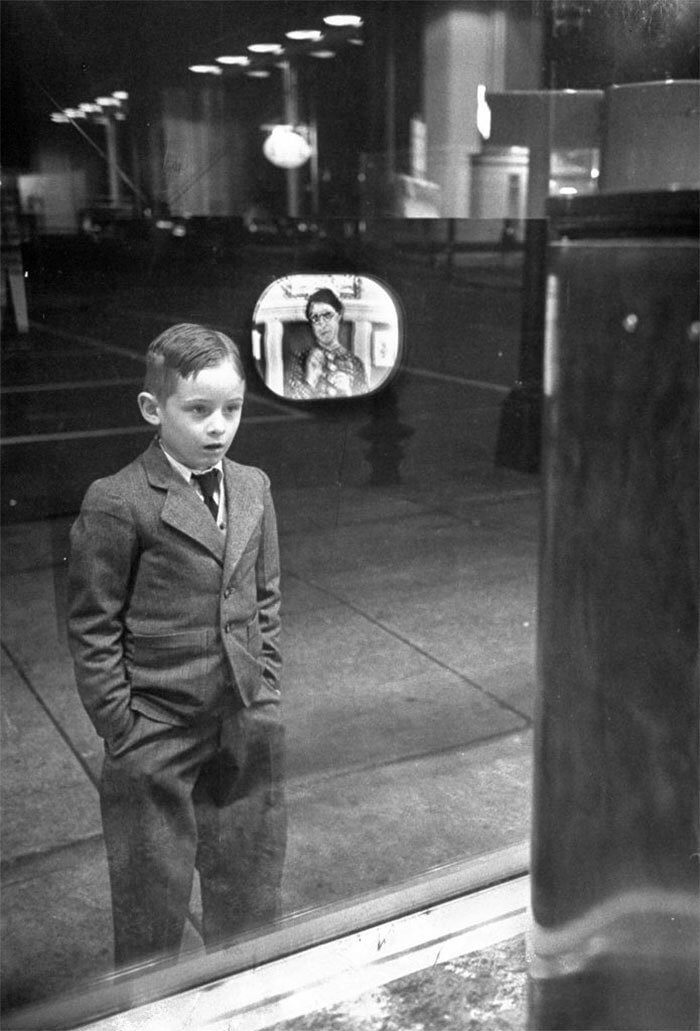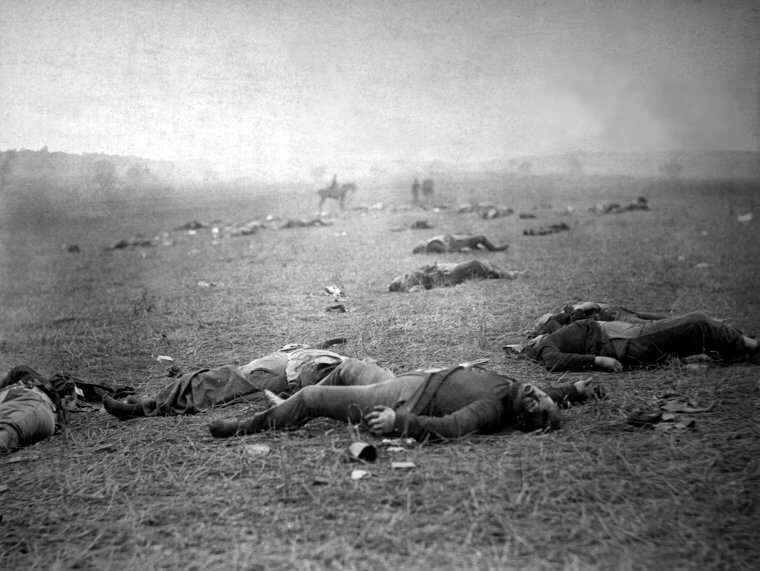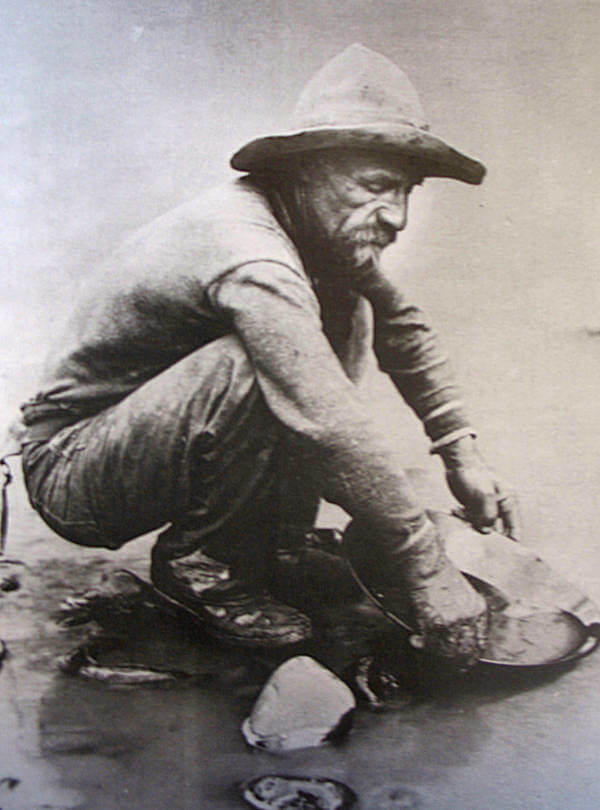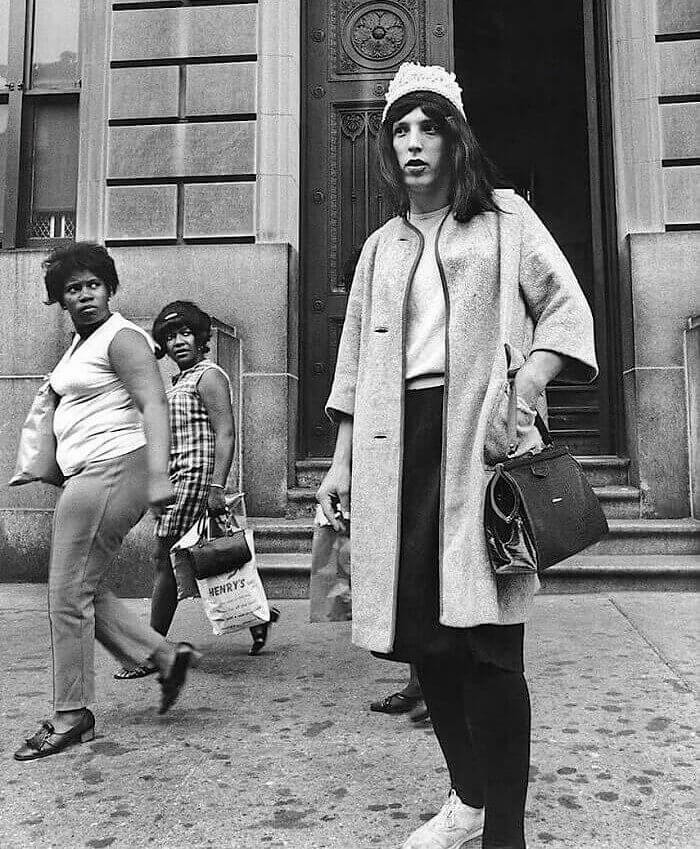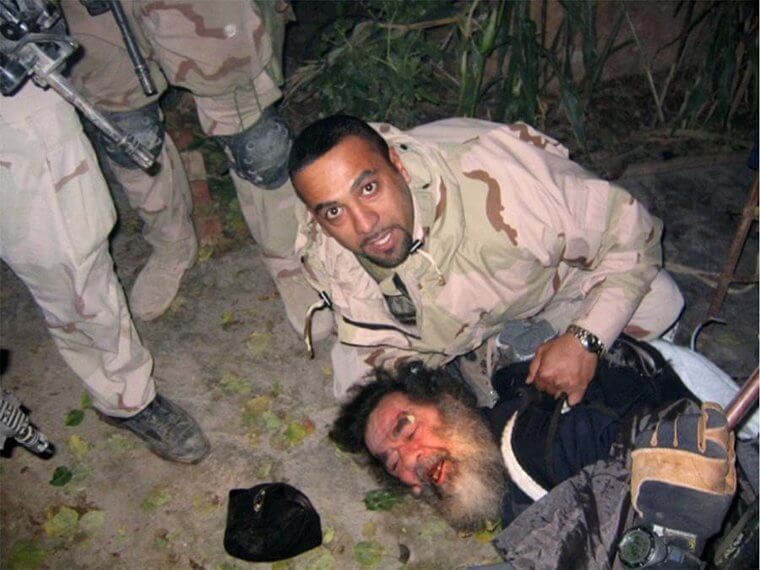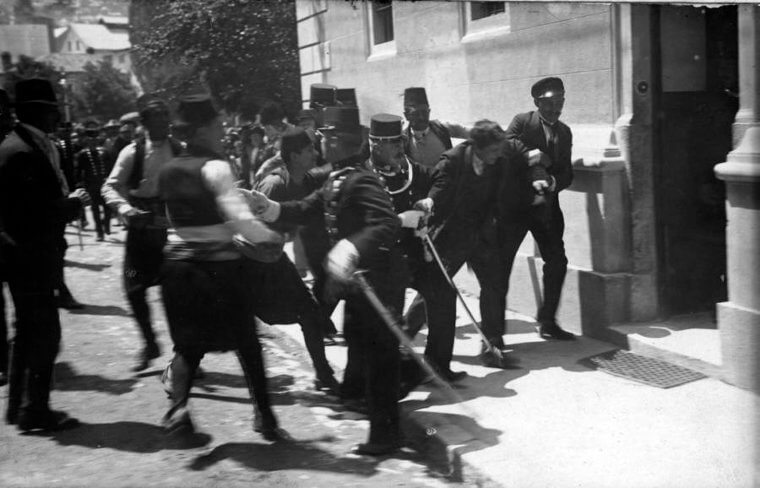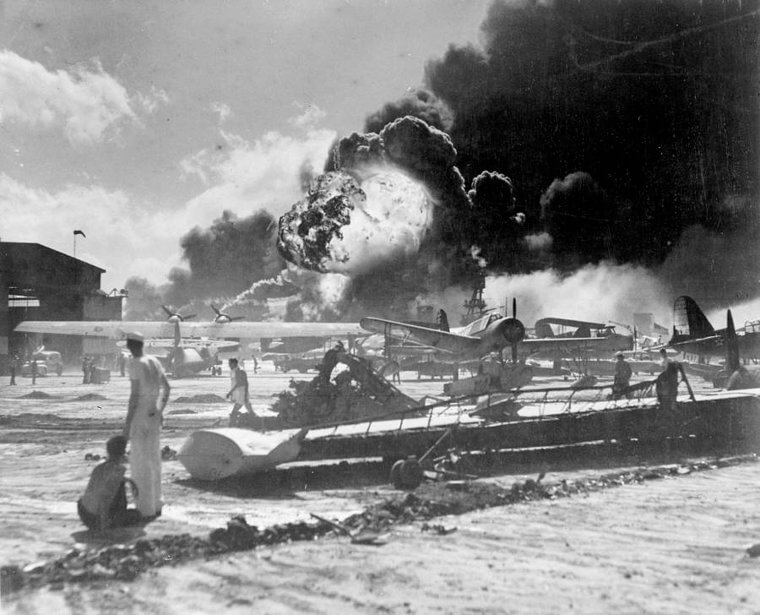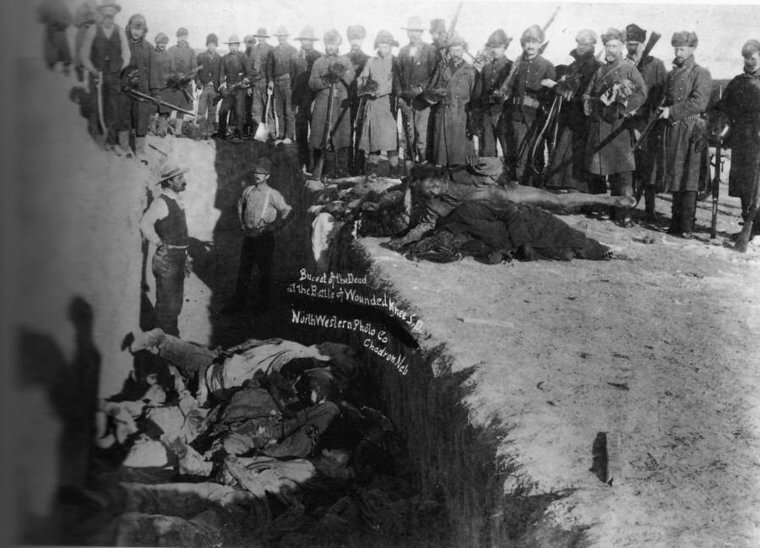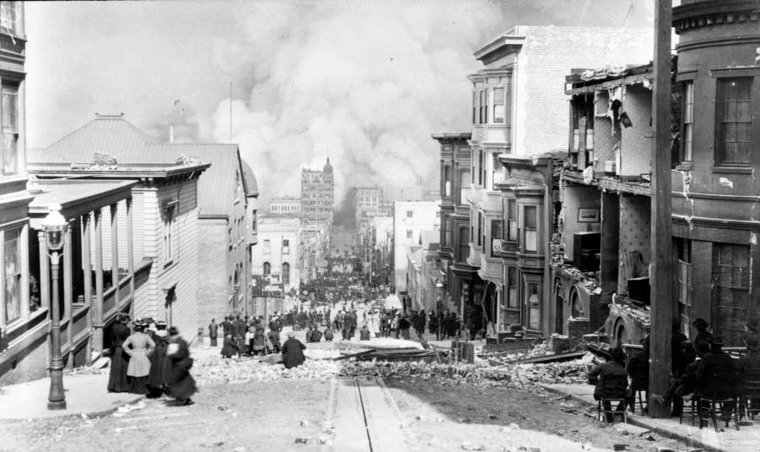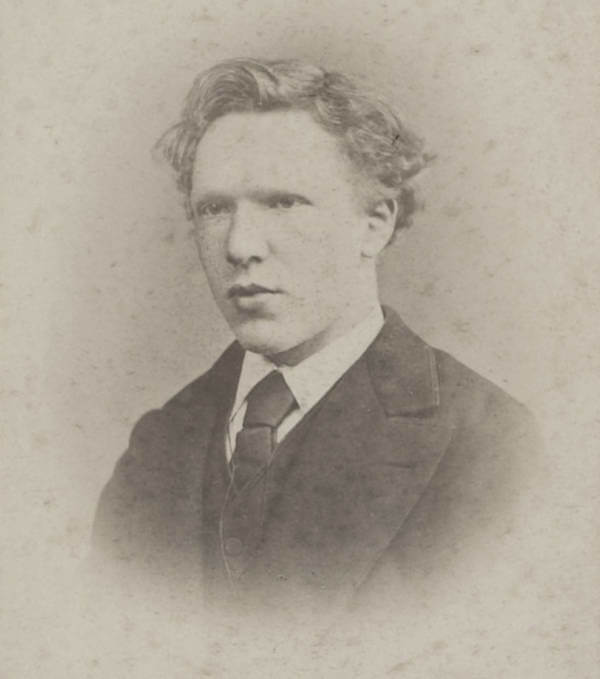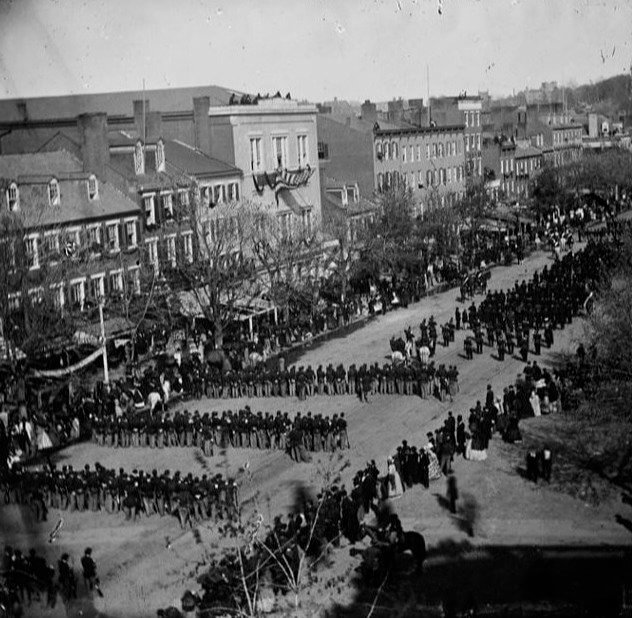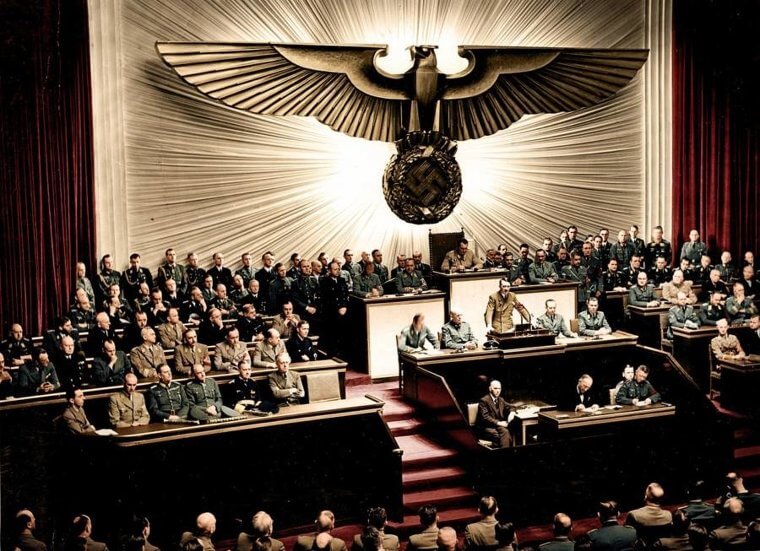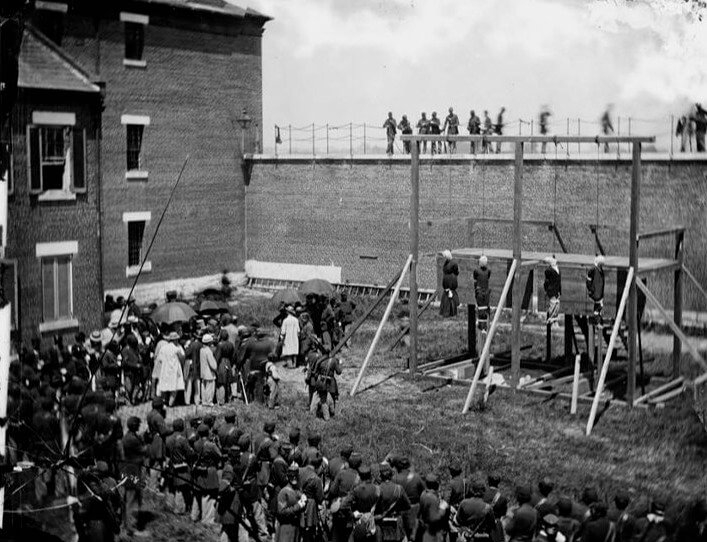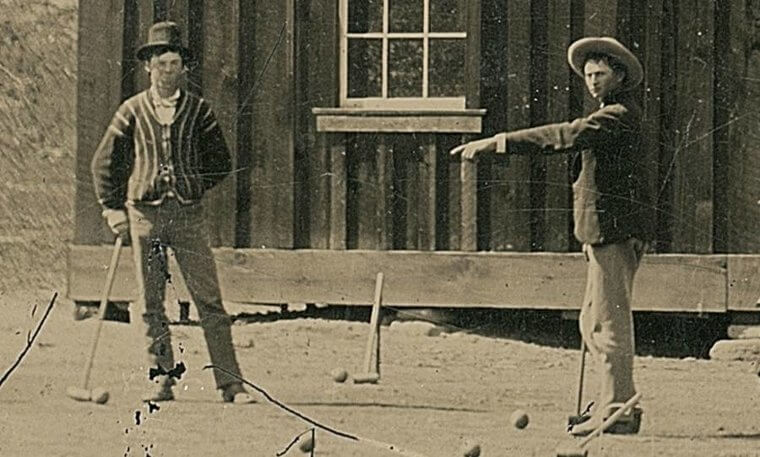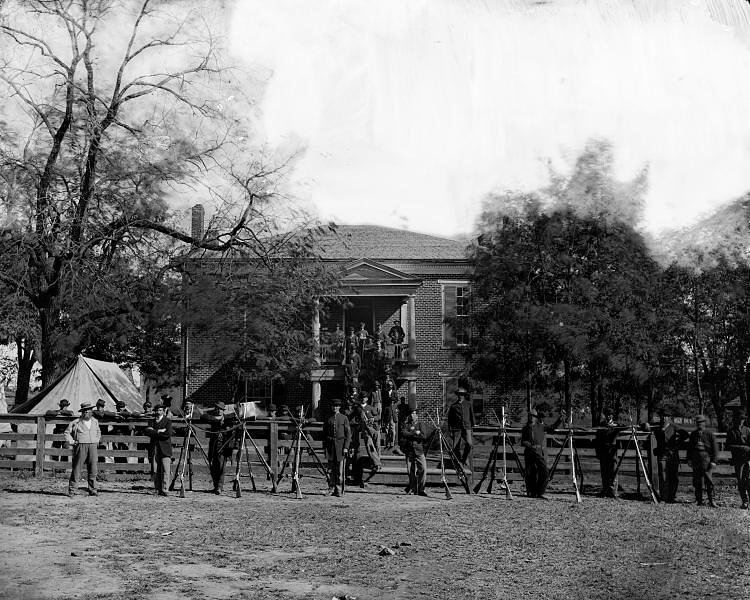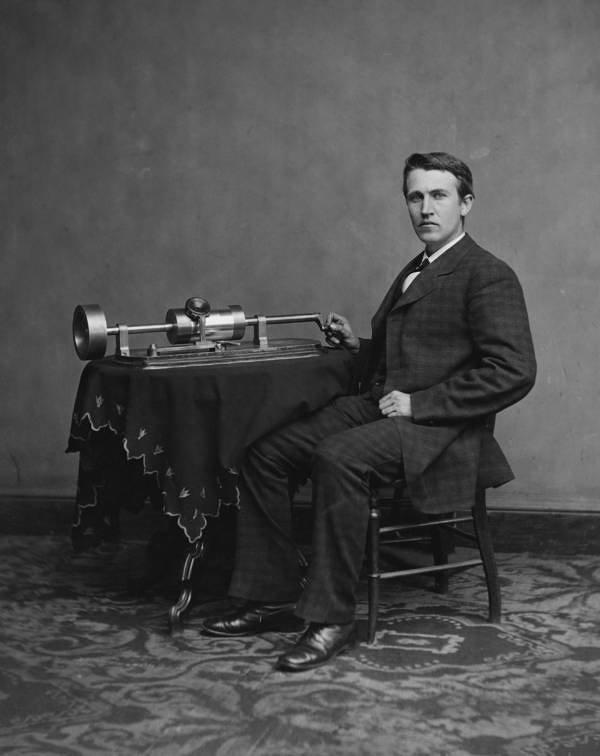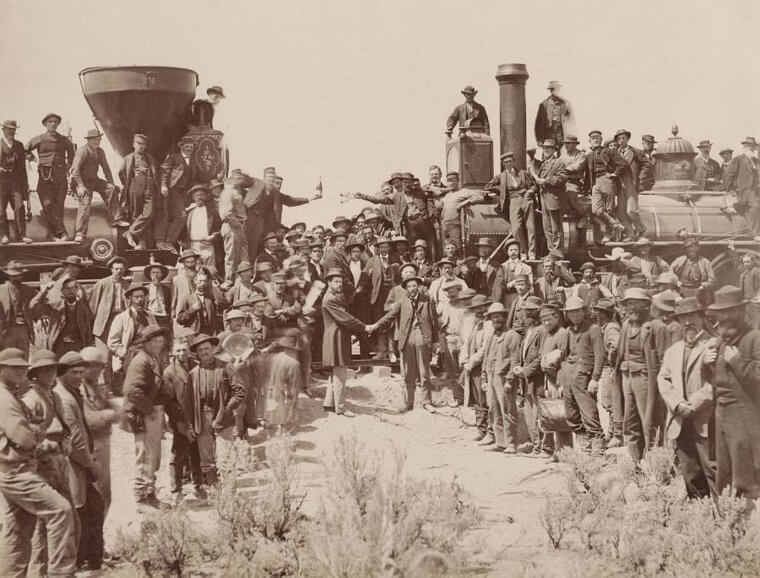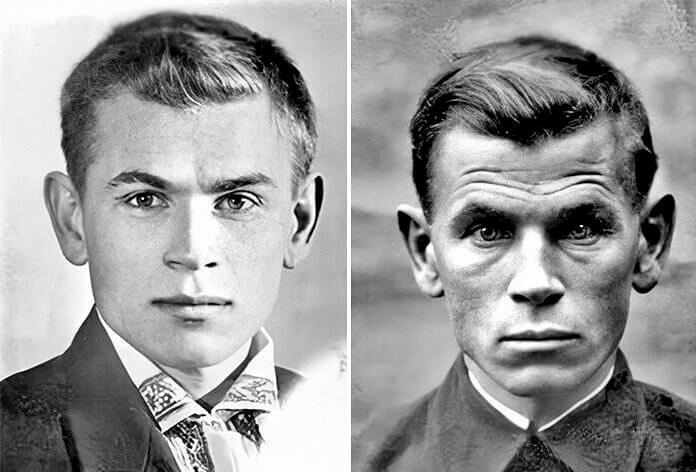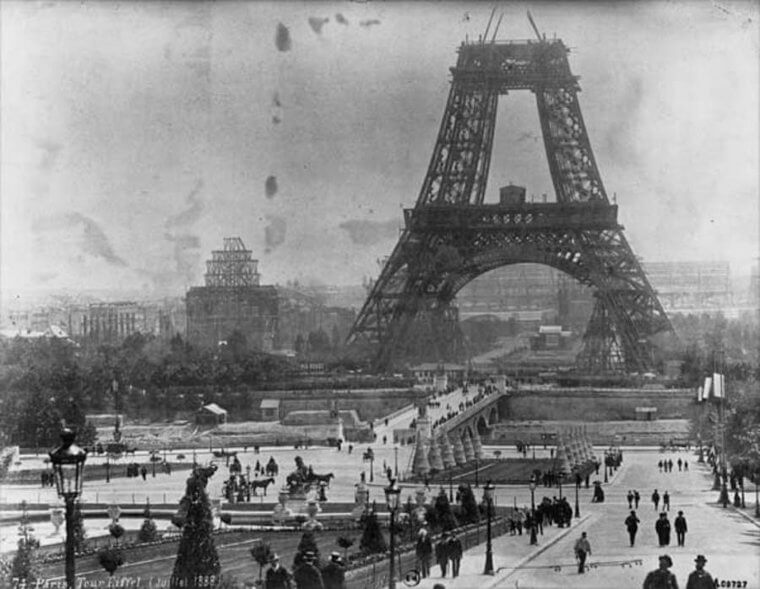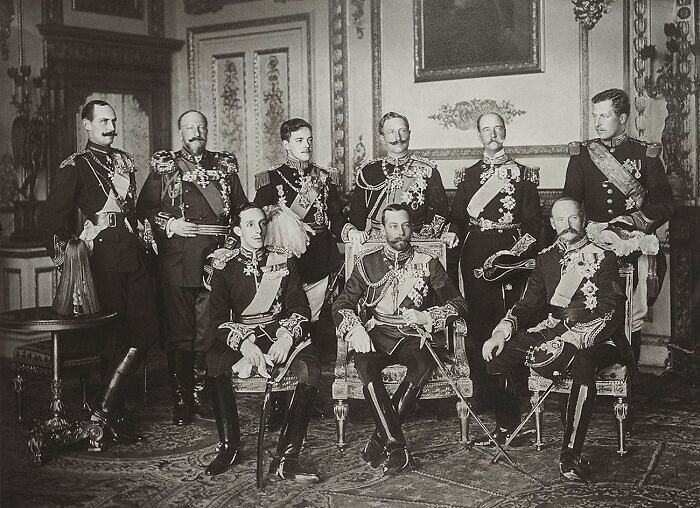This article was originally published on HistoricTalk
The Very Last Lifeboat Off The Titanic Rowing Away
We've all seen the Leo and Kate version of this tale. But the real sinking of the Titanic was far less glamourous. You might think no pictures of the vent survived the icy waters. But actually, a remarkable image exists. Here, we can see survivors on the last lifeboat escaping into the sea. Some might be curious how those coveted seats were chosen in all the chaos. Surely, everyone wanted to leave!
J.H. Buckingham of Boston was a survivor that was interviewed after the wreck. Although a few men made the cut, he recalled: "On a suggestion that we might be obliged to take to the boats, it was immediately remarked by one of our French passengers, and responded to by others – 'Let us take care of the women and children first.'"
Abe Lincoln Arrives to Deliver The Gettysburg Address
Brother against brother, the American civil war lasted for four years. In the midst of the fighting in 1863, President Abraham Lincoln made a visit to the Soldiers' National Cemetery. In Gettysburg, he delivered one of the most memorable speeches in the nation's history. He knew he needed to inspire folks to keep fighting, so he explained: "Four score and seven years ago our fathers brought forth on this continent a new nation, conceived in Liberty, and dedicated to the proposition that all men are created equal."
We've all heard that line before. But have we seen a picture of the actual event? Here, in all its grainy glory, we have the president in the crowd at that historic event.
The First Air Flight Ever Taken by Man
Orville and Wilbur Wright were the brothers that started it all. Sure, plenty of others had tried to lump off building with wings, or engineer silly contraptions. But these men made flight actually happen when they launched a successful plane takeoff in Kitty Hawk, North Carolina. It was 1903, and a huge leap for mankind into the sky. But in case you missed the event, this photo was taken just seconds after lifting!
Reflecting on the achievement, Wilbur mused: "I confess that in 1901, I said to my brother Orville that man would not fly for 50 years." How very wrong he was!
A View of the WWII Nuclear Bomb in Japan From The Ground
The United States decided that WWII needed to end, and there was one surefire way to do that. Now in possession of nukes for the first time in human history, President Truman gave the order to drop two nukes on Japan. They exploded on the cities of Hiroshima and Nagasaki, and the destruction was unprecedented. In just an instant, many thousands of people were exploded, vaporized, and blown to smithereens. It's shocking, but we actually have a photo showing the view from the ground. Look here!
The debate over the morality of that move continues to this day, and probably will never be settled. People have strong opinions on both sides.
Neil Armstrong's Face Just After The Moon Landing
Although there seem to be some skeptics these days, most of us believe that Neil Armstrong did, in fact, walk on the moon. It was a proud moment for America, and for humanity, in general. What a feat of science! Not to mention courage, in the case of the man in space. We've all seen the spacewalk photo of Neil kicking moonrocks around. But check out this lesser-known snap of the astronaut right after he returned to the pod.
We can see he looks rather pleased with himself. And we don't blame him! Neil and NASA achieved the seemingly impossible and lived to tell the tale. To infinity, and beyond!
This Is Literally The First Photograph Ever Taken
We can guess that early photography was pretty blurry. But how bad was it, exactly? If you've been curious about the old technology, we have an example for your comparison. This is the very first pic ever taken by a human. It was snapped in Burgundy, France. If you look closely, you might be able to make out that it is a view from a window. Nothing too fancy, really!
Since the first clunky devices, we have made cameras smaller and smaller. And the images are much better now, to put it mildly. We upgraded to Polaroid instant film and then went totally digital. What will be next? Your guess is as good as ours!
A Morbid Photo of The Battle Of Little Bighorn
The Battle of Little Bighorn stands out in the history books as a major Indian rebellion. Lakota warriors surrounded famed General Custer and his men in southern Montana near the Little Bighorn River. In two days in June 1876, things really didn't go as planned for the American soldiers. The general himself was killed, along with most of his men. The shocking event was called Custer's Last Stand. Undeniably, it was!
Here, we see a pile of human and horse bones at the site in 1877. Remarkably, this is all that remained of the proud soldiers who marched in just a year earlier.
This WWI Nurse Is Writing Down This Man's Last Words on the Battlefield
WWI was a brutal conflict that sent soldiers into trenches to fire and lob grenades at solider in other trenches. It was the beginning of modern tools of war, and human destruction took place on a massive scale. 20 million people died in one way or another, and so many more came home without limbs, plastic surgery was literally invented to deal with the aftermath of this conflict. Were there any humane moments on such a battlefield?
Well, we've found one. This is a Red Cross Nurse doing her duty in battle in 1917. She is writing down the last words of a soldier, who has been mortally wounded. Presumably, she tried to give it to his loved ones.
An Actual Pic of Abe Lincoln On The Battlefield
We've seen a lot of presidential portraits of Honest Abe. But what about still shots of his posse? The 16th president once explained: “A friend is one who has the same enemies as you have.” This photo is certainly such a case. On the left, we see Allan Pinkerton, an intelligence operative who helped the union. On the right, we see Major General John A. McClernand, who commanded his missions.
They're all hanging out on a Maryland battlefield in 1862, talking about plans, no doubt. Whatever they decided here seems to have worked out. The USA is still one country!
Nikola Tesla With His Transmitter Invention
When it comes to inventors, we hear a lot about names like Edison and Einstein. But what about Serbian scientist Nikola Tesla? He was an impressive guy as well. Using electrical engineering, he obtained more than 300 patents for his wild inventions. Here, we can see one of them in action in his Colorado Springs laboratory. Above him, it appears that lightning bolts are being generated. What is going on?
This is actually his magnifying transmitter, an attempt to get wireless electricity using the force of the earth's rotation. That's pretty futuristic, all the way back in 1899.
This Is an Authentic Samurai In Action in 1860
We've all heard about the legend of the Japanese Samurai. We've seen them in painting and even on sushi menus. But what is the real story of their place in old Japan? From the medieval period all the way to the 1800's, they were a pretty big deal. Passed down from father to son, these elite warriors were actually a class of their own. They had super sharp swords and unparalleled skills. But the fact is, samurais were abolished in 1876.
This photo was snapped before the government decided to reform society. In 1860, you could have seen this walking around. Would you have messed with their authority? We think not!
This Innocent Boy Witnessing a TV for the First Time in 1948
These days, everyone has at least one TV in their home. Some of us have multiples! It's not a big deal anymore, but there was a time in human history when people didn't have them at all. They were available to buy in the 1920s, but they were expensive and uncommon. In the decades that followed, people became aware of the medium, but they may have only encountered them in display windows.
Here, a young boy encounters the device for the first time in his life. It is 1948, and he is astonished to see moving pictures on a screen. We can see the shock is real!
D-Day Through The Soldiers' Eyes
The winner of WWII seemed very uncertain while it was going on. Would Germany, Italy, and Japan win? Maybe it would be America, Russia, and Britain. Before nukes definitively answered that question. there was a big raid on the beaches of Normandy in France. Young American soldiers rushed the beaches to liberate locals from Nazi control. And It worked! Have you ever seen a real photo of that epic event?
During this modern war, cameras were actually already common. Here, a picture titled "Into the Jaws of Death" shows us what it looked like to arrive on the shore. What a view of history!
The Aftermath of Civil War Battles Was Gruesome
It was the quest to keep the union. In the end, this succeeded. But the American Civil War killed hundreds of thousands of young men. One big event in that saga was the Battle of Gettysburg, a name we all hear to this day. Why was it so notable, out of all the deadly days of the war? Turns out that this was the single bloodiest battle fought on U.S. soil. 8,000 people died!
In a rare photo, we see the bodies sprawled out in the Pennsylvania grass. The area is still a tourist attraction today, and hobbyists recreate the fight right on site as civil war reenactors
This Is What the California Gold Rush Really Looked Like
The famed California Gold Rush was a mass migration of 300,000 new residents in search of riches. In 1848, word got out that there was treasure in the rivers. The new Transcontinental Railroad let people get there easier than ever before. A lot of people were glad they came: Tens of billions of dollars of gold was discovered, in today's terms. Lots of rags to riches stories happened, to be sure.
But how did they do it? This old photo shows us the process. Around 1850, a man pans for gold in a river in California's Sacramento Valley. Maybe he became a millionaire!
A Sneaky Brooklyn Police Officer in 1969
What's going on here, in broad daylight in 1969? The back of this photo reads: "The police department in their program to crack down on muggers and sex offenders had one of their volunteers, Patrolman Wm. R. Winter of the TPF, assigned to the 78th pct, Bklyn, disguise as a tall voluptuous broad. Around 12 or 1am July 1st, while patrolman Winters was in his disguise, two men pinched the undercover man where a woman shouldn’t be pinched and the undercover man [redacted] pinched them in return."
Well done, sir. This officer bravely went where possibly many men went before. We're not sure that the woman on his left is buying his costume, though!
We've Never Seen The Capture Of Saddam Hussein Like This
It now seems long ago, but at one time, Saddam Hussein was the leader of the nation of Iraq. In 2003, the USA invaded after a year-long debate. The takeover was quick, but there was one thing that confounded troops. Where in the world was Saddam? The search began, and it continued until he was found. The world was shocked to see his final hiding place: a hole in the ground.
Here, we see the moment that soldiers capture the former president. Saddam really doesn't look his best. It seems it has been a while since a shower or a haircut. Pretty rough!
The Shot That Started World War I
We all know the main themes of WWII, but what was WWI actually about? That seems to be forgotten by most. Even teachers had trouble explaining this one in history class. The short answer is, an assassination started off a powder keg in mainland Europe, and everyone got involved. Who was murdered? It was a fellow called the Archduke Franz Ferdinand of Austria. Here is an actual photo of the police nabbing the killer!
In the end, there were 20 million dead. At the time President Woodrow Wilson declared: “This is a war to end all wars." A nice sentiment, but how wrong he was!
These People Witnessed the Attack on Pearl Harbor From the Other Side
America was attacked on December 7, 1941, when Japan bombed Pearl Harbor. That made the USA enter the war second world war, and things didn't go so smoothly after that. Nukes were unleashed, and the Japanese were defeated. We've all seen the famous images of that fateful day, but this is a lesser-known perspective. Here, men sitting near the plane field see something burning in the distance. It must have been terrifying!
At the time, they couldn't have known what they were witnessing. But soon enough, the entire world heard the news. More than 2,000 people died, and more than 1,000 were wounded!
This Is The Wounded Knee Massacre of 300 Indians in 1890
Fighting over resources and land? That's a story as old as time. A very sad and bloody history between settlers and natives is inside American history books. There were attacks on both sides, way back when, and we hate to think about the shootings and scalpings. Here, we have an old photo showing a major event where 400 troops killed 300 men, women, and children from the Lakota tribe. Ever heard of the Wounded Knee Massacre?
When U.S. troops were ordered to transport the tribe to a camp, it is said that one Lakota wouldn't give up a weapon. Chaos ensued, and the fighting began. This image shows us the resolution: A mass grave.
A Rare Shot of The San Francisco Earthquake Of 1906
Giant earthquakes don't happen every day, but those who live on a fault line are aware it's a possibility. San Francisco seems like a peaceful coastal city. But every once in a while, things get seriously shaky. The last time a massive disaster struck was more than a century ago. In 1906, a quake destroyed 90% of the city. More than 3,000 were dead, in mere moments. 250,000 became homeless!
Here, a photographer captured part of the mess. Horrified onlookers stare ahead at clouds of dust and listen to the noise in the distance. Mother nature can be moody, they learned that day.
Vincent Van Gogh's Actual Photo Portrait
Vincent Van Gogh is one of those names that stand above the rest. Even those without fine taste are well aware of his Starry, Starry Night painting. And we bet you also know he cut his own ear off! The man was not well, but many geniuses suffer. He did a haunting self-portrait later in life, during harder times. We wonder: Were there any photos? As it turns out, there are just two in existence.
This portrait was taken when he was working as an art dealer, but not yet known as an artist himself. It was 1873, and he was just 19.
President Lincoln's Funeral in Washington, D. C.
The funeral for President Abraham Lincoln was held on April 15, 1865. It was actually just six days after the final surrender in the civil war when John Wilkes Booth assassinated him. A shocked nation listened to Congressman Charles B. Sedgwick give the eulogy. How could they process the loss? The congressman assured them: “He went at the call of duty to the post of danger, and although wrecked, his life is by no means lost.”
Here, we see the formal precession, which took place four days later. Funeral marchers went down Pennsylvania Ave. in Washington, D.C. to pay their respects. Now the union was together, but the cost has been high, indeed.
Adolf Hitler Declares War On The USA in This Very Photo
Although America has been neutral at first, they eventually started making naval moves that enraged The Third Reich. Germany formally declares war in a neat, diplomatic document. Then, Adolf Hitler himself addressed his government in the Kroll Opera House in a speech listing German successes for 88 minutes. The list was long, and spirits were high. That day, his allies declared war against the USA, too.
This photograph captures that infamous speech. Colorized for effect, it's both easy and eerie to imagine being there. As we all know now, winning the war wouldn't be an achievement added to the list.
The Hanging Of Four Men After The Lincoln Assassination
The man who actually killed President Lincoln was John Wilkes Booth. But his tricky plan to sneak up behind Abe in a theater and shoot wasn't carried out alone. He had conspirators, which doesn't surprise us. In the aftermath of a presidential assassination, the nation demanded justice. Around ten Confederate sympathizers had tried to revive their national project. Six were killed during their attempts to get Abe. Four thought they got away, but didn't.
This photograph captures this lesser-known part of the story. Here, four plotters are being hanged: Three men and one woman. It all took place in the nation's capital on July 7, 1865.
Notorious Western Outlaw Billy The Kid With His Posse
It seems enough time has passed to romanticize the outlaws of the old West. But at the time, they were scaring everyone to pieces! Take Billy the Kid, for example. During his life of crime, he killed at least eight men. The police were after him, and we can understand why he was a high priority. He had already escaped from jail after a previous apprehension. He was on the loose, and he needed a hanging!
They eventually did track him down, and he was shot and killed in the process. Billy died at 21. Here, we see him in a rare photo with a friend in 1878 in New Mexico. It's one of only 2 photos in existence!
The Statue of Liberty Had a Detached Face at One Point
The Statue of Liberty wasn't crafted from one solid piece of metal. Instead, the French made it methodically out of many components. The face was once detached, and on display in a public garden before the statue was shipped over for assembly. Here is a photo of what that looked like, back in Paris. Before Lady Liberty found her new home in NYC, she seemed to enjoy her time in the old world.
It's worth noting that although the photo is black and white, she would have been copper-colored, not green as you know her now. Just like a penny changes over time, so did she!
This Is The Surrender That Ended The Civil War
Historians have plenty of disagreements about the American Civil War. For example, why was it really fought? And how did it really end? For the latter question, we do have a clue. Most say that it formally stopped at this courthouse on April 9, 1865. Soldiers wait outside as Confederate General Robert E. Lee meets Union General Ulysses S. Grant to surrender. What a moment! We can't believe it's actually captured on old, grainy film.
A lot has happened since then, and it's easy to forget these historical landmarks. But FYI: This is the Appomattox Court House in Virginia. Today, this site is preserved and open to tourists.
Armenian Genocide Photos Like This Are Rarely Published
We hear a lot about atrocities during WWII. There were millions killed under communism, too. And in Africa, we saw horrors in Somalia and Rwanda that made the news. But a major event that has gotten little publicity is the Armenian Genocide, perpetrated by Turkey. Today, Armenians are hoping to get the word out. This picture is a good place to start, taken in Aleppo, Syria, sometime between 1915 and 1919.
Here, we see an Armenian woman kneeling beside her child on the ground. Sadly, it is a scene of death. Experts estimate more than a million Armenians died during these executions. This is one snapshot, but most escaped lenses.
Thomas Edison Himself Reveals One of His Many Inventions
We certainly love and appreciate Thomas Edison for his ingenious invention of the lightbulb. Where would we be without him? In the dark, that's where. Or maybe, huddling over our desks with some burning candles. But how many people really know about his other inventions? It turns out Edison actually had a whopping 1,093 patents, not just one. Here, he sits next to one of his creations. Does it look familiar?
It's the phonograph! That is the first record player, to be clear. At the time, this device was very futuristic. And although we don't need to, some of us have even gone back records, recently. They just have that special sound!
The Klondike Gold Rush in Canada Looked Like This
If you were a Canadian in the 19th century and you heard about a gold discovery, you might have been part of The Klondike Gold Rush. People seem to be more familiar with the California event, but there was once ore up north, too. 300,000 Americans actually headed to northwestern Canada between 1896 and 1899 to take advantage of the opportunity. In reality, many of them got malaria, dysentery, and went in search of salt and food more than gold.
Photography existed during this era, but cameras weren't common yet. We are lucky that a few amateurs brought one along, which lets us see these miners at work. Undoubtedly, some got lucky!
The Glorious Completion Of The Transcontinental Railroad
Before the Transcontinental Railroad, long-distance travel was hardly a reality for many. President Lincoln implored savvy Congressman Oakes Ames to promote a railroad to connect all railroads. It seems he did take that advice, and historians credit Oakes with making that happen more than anyone else. As an honor, the city of Ames was named after him in Iowa. And now, shipping and traveling was a whole new ball game.
Here, we have a photograph of workers completing the railroad at Promontory Summit, Utah. In 1869, America finally had a totally connected railroad system, all across the nation. What a revolution!
The Face of a WWII Soldier Before and After the Conflict
The cost of war is often talked about in terms of money, national pride, or lives lost. These are all ways to discuss the real problems with violent conflict. But what about the personal cost to the surviving soldiers from battle? Here we have remarkable pictures of soviet soldier Eugen Stefanovich Kobytev. On the left, it is 1941, on the day he left for war. What is the photo on the right?
Remarkably, it is the update just 4 years later. Looking at his bags and wrinkles, he looks like he has aged 20 years. And most of all, we notice the look in his eyes. We can tell he has seen a lot, and this has physically altered him from the inside out.
The Eiffel Tower Mid Construction Is an Interesting Sight
The Eiffel Tower was constructed because Paris was hosting the World's Fair, and they wanted to look impressive when everyone arrived. We will say they did a good job: We're still impressed! The structure is named after the engineer whose firm built the tower: Gustave Eiffel, of course. Looking at it today, we admire it from base to top. But there was a mid-point, and we've found the photo that shows the process.
It's July 1888 here, and we can see half the monument is complete. It's been 15 months so far, and there are 9 more to go. Soon, it will be the most romantic tower on earth!
The Nine Kings of Europe All Pictured Together at a Royal Funeral
We don't even know who the royals of Europe are anymore, except for a few Brits like Harry and Charles. But many nations used to have kings, and some still do. They're just off the radar, living quiet lives and making no decisions whatsoever. Around the turn of the last century, there was a funeral for King Edward VII at Windsor Castle. All nine kings of Europe attended this totally historic event. What a photo!
They're all here: King Haakon VII of Norway, King Frederick VIII of Denmark, King Manuel II of Portugal, King Alfonso XIII of Spain, Tsar Ferdinand of the Bulgarians, King George V of the UK, King George I of the Hellenes, Kaiser Wilhelm II of Germany and Prussia, and King Albert I of the Belgians.

